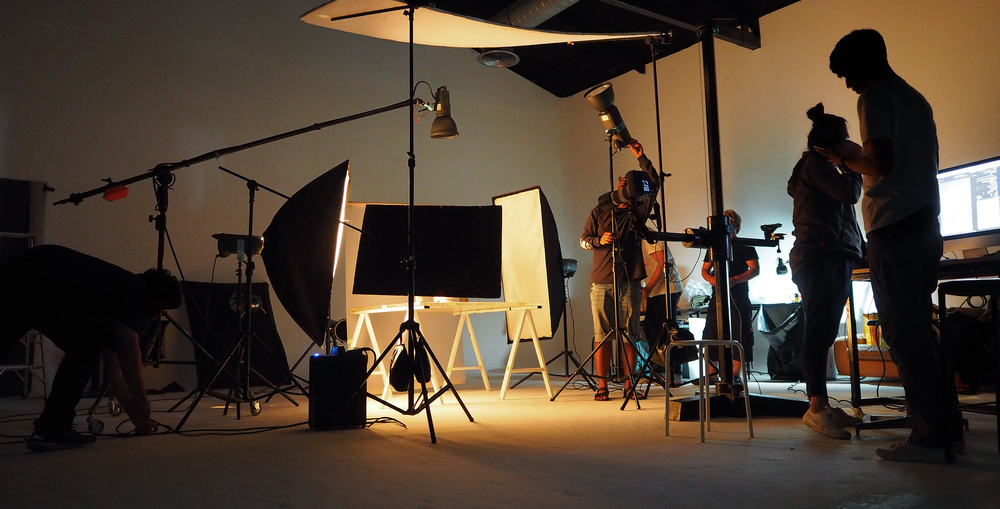
Are you doing your video voice-overs correctly?
Did you know that voice-overs can change people’s perception of your video? Understand its importance and check out our tips.

What will we see in this post
Putting together a good video requires preparation and planning. Therefore, a poorly inserted element can put the entire experience proposed by the audiovisual in jeopardy. With this in mind, video voice-overs are an important element because they can drive the communication and relate with the information presented visually.
Intonation and timbre influence the message that the video is trying to convey. There are times when it will be necessary to increase or decrease the speed of speech, for example, to ensure that the voice-over conveys the right feelings to viewers or listeners.
Considering that working with voice-overs for videos can be challenging, you need to understand the importance of this element for production, as well as having to rely on a few strategies to use them efficiently. Would you like to learn what is needed in order to create good voice-overs for your videos? Well, keep reading.
Understand the importance of voice-overs for videos
Videos require special attention to the quality of the images that make up the content. This care is critical so that the production can convey the desired emotion to the audience and allow it to achieve the goals outlined by the promotion strategy.
Sometimes, images are sufficient to convey what is desired. However, voice-overs for videos can help your viewers have a more profound experience and provide visual and listening stimulation.
The union of these elements requires careful editing in order to match the spoken information with what is presented visually. If it’s done well, the voice-over could even touch the listeners emotionally.
Whenever you need to draw attention, for example, you can use a stronger tone of voice, with authoritative words.
Voice-overs help lead listeners, serving as a guide for the comprehension of the content. A calm and didactical voice enriches tutorial videos, making it easier for viewers to understand the instructions that the audiovisual production intends to present.
The voice can gain a different intonation during specific moments, in order to attract the attention of your listeners even more. This strategy is critical to prevent people from getting distracted during the video. This way, the video’s goal can be achieved.
3 important factors in video voice-overs
Now that we’ve talked about the importance of voice-overs for videos, it is necessary to ensure that it’s done with the maximum quality possible.
A few tools, equipment, techniques and care ensure that the voice is conducive to the listeners’ experience.
The use of the voice needs to make sense for the strategy outlined for the content. For example, the audience has a different reaction when listening to a male or female voice-over, according to a study conducted by Albany University.
1. Build a narrative
Communication needs to take into account the user’s experience at all times and steps, and the videos must also fulfill their role in the listener’s journey.
Creating a narrative is a way of engaging people, bringing them closer to experiences and creating empathy. In this context, voice-overs serve to tell this story to your listeners, attracting them to what is being presented in the video.
2. Develop a rhythm for your voice-over
A fast-paced voice-over might make it harder to understand, while slower speech might make the listener less involved with the video.
Therefore, while recording the audio, you need to use a suitable rhythm so that each word can be understood. It’s also important to pay attention to your word stress, so as not to change the meaning of the sentences.
Ideally, you need a standard rhythm for your voice-over. You can test it with your audience, to make sure that it is suitable and consistent, and that they understand it. It’s worth remembering that rhythm, as well as language, varies according to your persona. And in certain cases, you can use slang and abbreviations.
3. Record your audio as cleanly and clearly as possible
Recording audio can be quite susceptible to external noise during the process. Therefore, it’s important that you find an acoustic environment that reduces the possibility of unwanted noise.
Certain editing programs can treat your audio and reduce the impact of undesired noise, but removing them completely is difficult. Therefore, it’s worth ensuring the maximum quality possible while recording your voice-over, avoiding any type of negative impact to the final recording.
To do things right, use quality equipment: a microphone and a mixing desk, or a recorder. Make sure that all parts are properly fitted and that there’s no bad contact between the cables, which may cause noise during recording.
Check out 3 tips to help you make a good video voice-over
1. Drink plenty of water
Your voice can be easily damaged when not well hydrated. And since water reduces hoarseness, coughing, and helps you clear your throat while recording, don’t forget to have a glass of water nearby at all times!
2. Use a pleasant tone and take your time
A pleasant voice-over is more attractive to listeners. In order to convey this tone in your communication, record the audio with a smile on your face. After all, it will help you convey enthusiasm.
In order to be able to get across all the necessary information, you also need to be patient. Therefore, avoid recording your voice-over in a hurried manner. Take the time to make several attempts. And since the audio might not sound good at first, don’t let this rattle you. Just take a breath and a sip of water and try again!
3. Simulate a conversation
You can use your imagination to help you with your voice-over. For example, just imagine that you’re having a conversation with a friend or a colleague. This way, you will sound more natural and your rhythm will be calmer.
Offer your viewers a good experience
As you can see, voice-overs for videos is a way of intensifying your viewers’ experience with your material, helping drive the communication by showing the main points of your content through changes in intonation.
When well integrated, audio and video offer different stimuli to people, increasing their capacity to understand the content. This way, you can achieve the goals outlined in your strategy.
For a better experience, make sure you follow our video voice-over tips. Also, take advantage of your page visits and check out how streaming video can play a role in your strategies.




